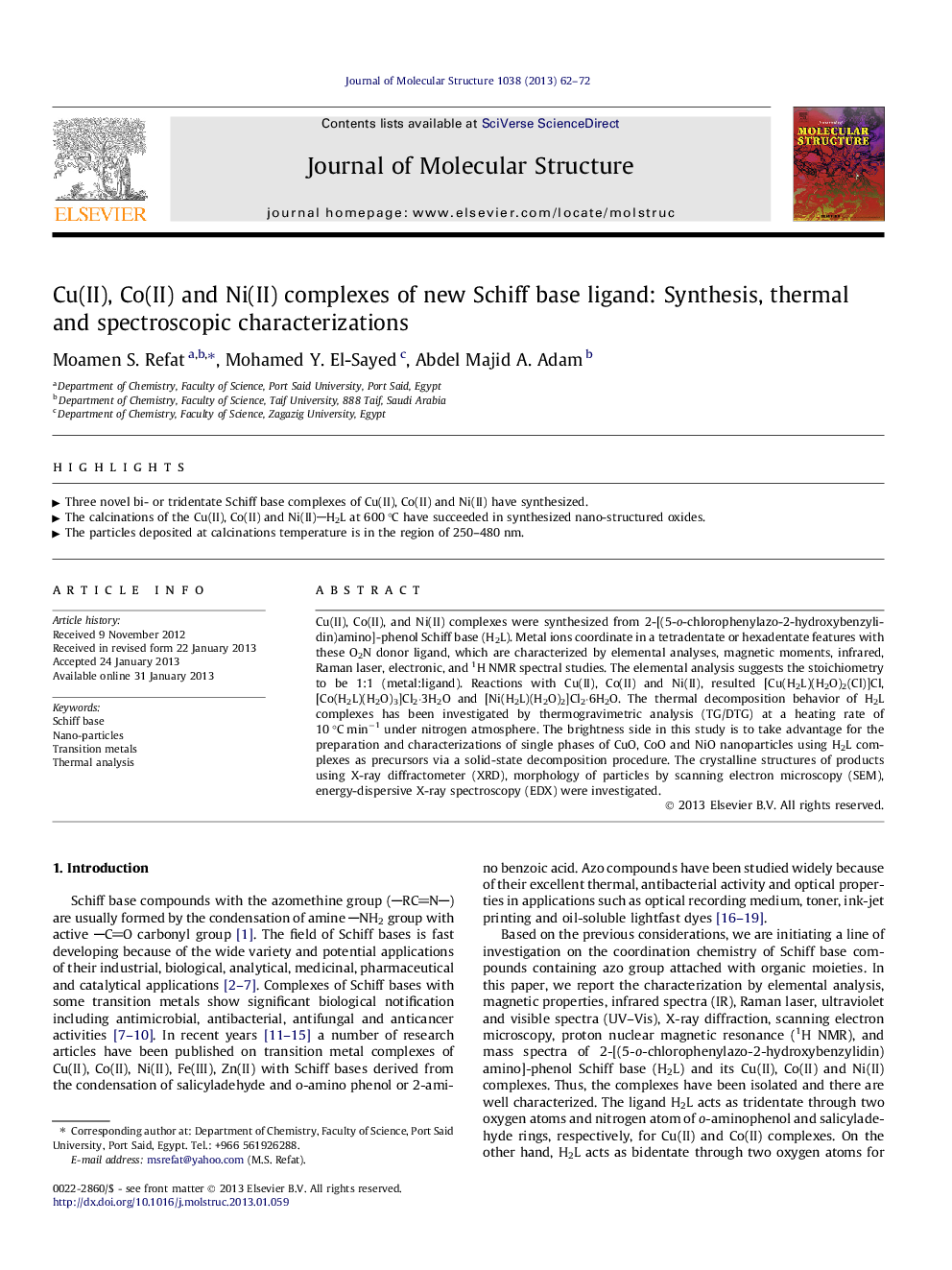| Article ID | Journal | Published Year | Pages | File Type |
|---|---|---|---|---|
| 1405342 | Journal of Molecular Structure | 2013 | 11 Pages |
Cu(II), Co(II), and Ni(II) complexes were synthesized from 2-[(5-o-chlorophenylazo-2-hydroxybenzylidin)amino]-phenol Schiff base (H2L). Metal ions coordinate in a tetradentate or hexadentate features with these O2N donor ligand, which are characterized by elemental analyses, magnetic moments, infrared, Raman laser, electronic, and 1H NMR spectral studies. The elemental analysis suggests the stoichiometry to be 1:1 (metal:ligand). Reactions with Cu(II), Co(II) and Ni(II), resulted [Cu(H2L)(H2O)2(Cl)]Cl, [Co(H2L)(H2O)3]Cl2⋅3H2O and [Ni(H2L)(H2O)2]Cl2⋅6H2O. The thermal decomposition behavior of H2L complexes has been investigated by thermogravimetric analysis (TG/DTG) at a heating rate of 10 °C min−1 under nitrogen atmosphere. The brightness side in this study is to take advantage for the preparation and characterizations of single phases of CuO, CoO and NiO nanoparticles using H2L complexes as precursors via a solid-state decomposition procedure. The crystalline structures of products using X-ray diffractometer (XRD), morphology of particles by scanning electron microscopy (SEM), energy-dispersive X-ray spectroscopy (EDX) were investigated.
► Three novel bi- or tridentate Schiff base complexes of Cu(II), Co(II) and Ni(II) have synthesized. ► The calcinations of the Cu(II), Co(II) and Ni(II)H2L at 600 °C have succeeded in synthesized nano-structured oxides. ► The particles deposited at calcinations temperature is in the region of 250–480 nm.
